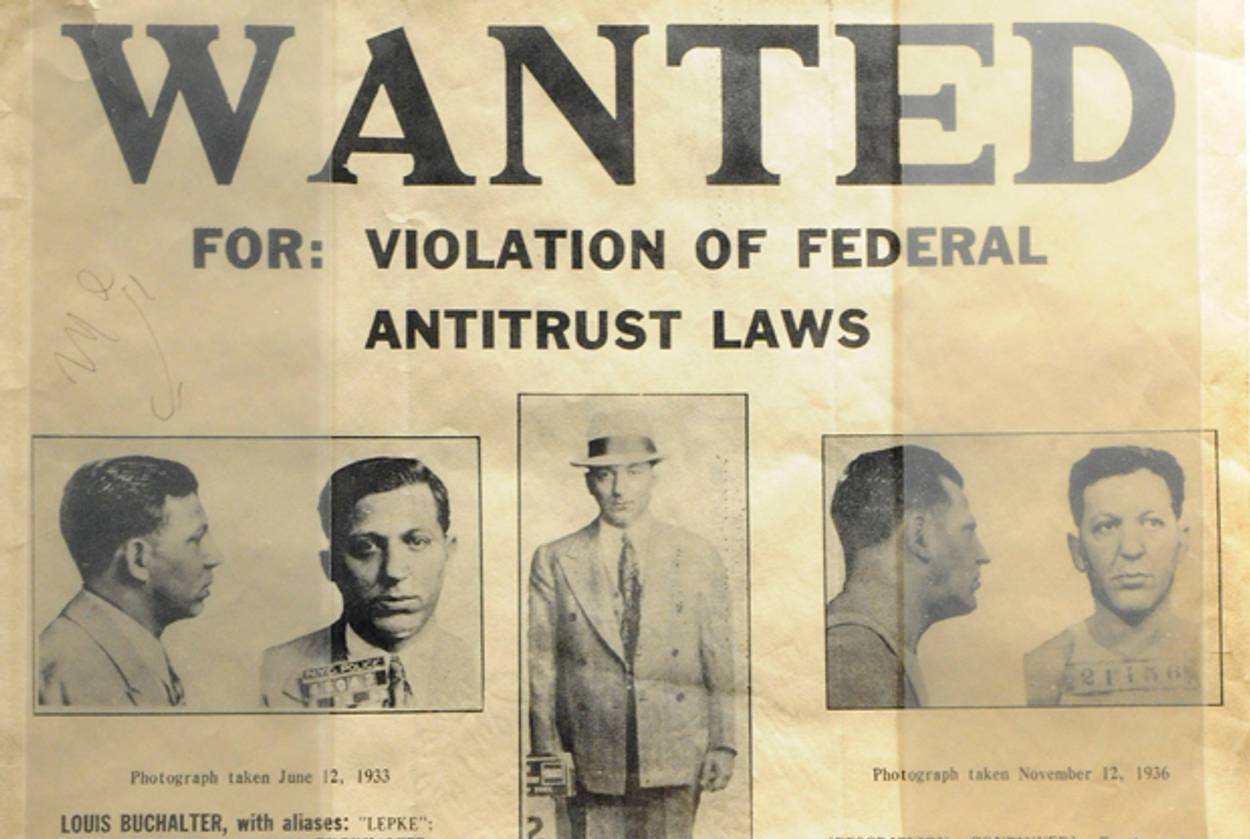The Jewish Gangsters of ‘Murder Incorporated’
Prohibition-era hit squad’s handiwork appears on Boardwalk Empire




In Sunday’s episode of Boardwalk Empire, a hit squad made an attempt on Nucky Thompson. Later, it becomes clear that the attempt was the work of Meyer Lansky and Lucky Luciano, and so it’s probably safe to assume that Lansky employed his hit squad, Murder Incorporated, for the job. The group made an appearance earlier in the season when they shot up Joe ‘The Boss’ Masseria.
Looking back, it’s hard to believe the havoc a mostly-Jewish hit squad (there were some Italians in the mix) was able to stir. In a strangely reminiscent scene in Season 1 of The Sopranos, a psychiatrist in Dr. Melfi’s practice, while discussing whether she should take on Tony Soprano as a client, says that his own family tree includes Murder Incorporated members, wryly remarking, “those were some tough Jews!” According to the New York Times, the squad was responsible for between 400 and 1,000 deaths, and wasn’t only about a cloud of tommy gun bullets: they were known to use ice picks as well. Now may be a good time to review a few of Murder Inc.’s major Jewish members, since they may be back in action on the small screen.
First, there was the unofficial head of the squad, Louis “Lepke” Buchalter. Lepke grew up on the Lower East Side, and his nickname comes from his mother, who used to call him Lepkeleh, using the Yiddish diminutive. He had already served two prison sentences by the time he was 22. He was known for the pleasure he took in hurting people—not exactly a nice Jewish boy. Buchalter’s fate was a strange one; while many of his associates were shot down in gang hits, he was one of the rare mobsters who was actually executed by the state after being charged with murder. Buchalter was responsible for the murder of another Jewish Murder Inc. associate, Hyman Holtz, who ran Lepke’s drug operation and was stabbed to death under Lepke’s orders for stealing money.
Another prominent figure was Bugsy Siegel, a major Lansky associate (and Boardwalk character played by Michael Zegen). A bootlegger who later moved to the west coast in order to help establish the Vegas strip, Siegel was one of the original members of Murder Inc., and may have been one of the shooters responsible for killing Masseria.
Jacob Shapiro, a racketeer and union manipulator, sat at the top of the organization alongside Lepke himself. It’s unclear how many hits Shapiro was responsible for executing on his own—his role was largely organizing hits and seeking out potential talent, sort of like an evil-head hunter. Among many, he recruited Allie “Tick-Tock” Tannenbaum to Murder Inc. who was at first a major player in the organization, but later flipped on Lepke and testified against him.
An outside associate of the organization was Harry Strauss, who, according to legend killed literally hundreds of men (and was arrested almost as many times before finally being executed). He must have had a lot to sort out come Yom Kippur.
Samuel Levine lied about his age and joined the military when he was 15. When he joined Murder Inc., he was one of the alleged shooters who aided Bugsy Siegel in killing Masseria. One of the strangest stories about Levine is that he had an intense rivalry with one of the organization’s other hitmen, who kept snatching jobs from under him. Even stranger was that Levine managed to stay under the radar almost entirely, and was never murdered or charged, getting paid for more than 30 years after the Masseria hit. It’s as though he was part of an unofficial, mob-organized criminal protection program. Perhaps it was because the ever-inscrutable Levine refused to do a hit on Shabbat.
Previous: On ‘Boardwalk,’ Meyer Lansky Looms Large
‘Boardwalk Empire’ Returns Without Rothstein
Related: Why Gangsters Who Broke Every Law Still Went to Services on Yom Kippur
Alexander Aciman is a writer living in New York. His work has appeared in, among other publications, The New York Times, Vox, The Wall Street Journal, and The New Republic.